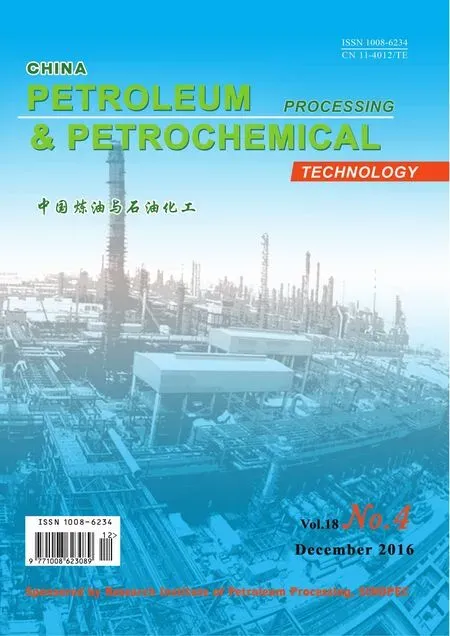Successful Application of Hydrocracking Technology Aimed at Prodigiously Boosting Jet Fuel Yield
Successful Application of Hydrocracking Technology Aimed at Prodigiously Boosting Jet Fuel Yield
Recently “the hydrocarcking technology aimed at prodigiously boosting jet fuel yield along with improvement of tail-oil quality” developed by the SINOPEC Research Institute of Petroleum Processing (RIPP) has been successfully applied in commercial scale on the 2.0 Mt/a hydrocracking unit at the SINOPEC Yanshan Branch Company, resulting in implementation of triple functions, viz.: boosting the jet fuel yield, reducing the diesel fuel output and improving the tail-oil quality. This technique has brought about obvious economic and environmental benefts, which can provide a material basis to bridge the demand gap in jet fuel supply at the new Beijing Airport and will serve as a good example of SINOPEC’s efforts in the area of transformation of production mode, structure adjustment, product quality upgrading and enhancement of economic benefts at the refning enterprise.
The research staffs of RIPP have been working strenuously in 5—6 years to develop the RHC-131 catalyst featuring high ring-opening cracking ability and high jet fuel yield with its overall performance commanding a global leading position. After realizing the optimized control over the process technology and adopting the catalyst grading technique, the catalytic performance has been brought into full play to boost the jet fuel yield to 43.3%, a 50% increase as compared to the level before the unit retroftting. The tail oil with a BMCI value of 8.7 can serve as a qualifed steam cracker feed to effectively improve the downstream operating effectiveness. Meanwhile the yield of gas oil fraction, which is currently faced with a diesel-glutted market, can be minimized to 0% in the production plan.
- 中國煉油與石油化工的其它文章
- Methodology for Design of Reactive Distillation Column and Kinetics for Isoamylene Etheri fi cation Catalysed by Amberlyst 35
- Optimization and Control of Extractive Distillation with Heat Integration for Separating Benzene/Cyclohexane Mixtures
- Molecular Simulation of Adsorption of Quinoline Homologues on FAU Zeolite
- Study on the Effect of Surface Modi fi cation on the Properties of Bentonite Greases
- Improvement of Magnetic Field on Tribological Properties of Lubricating Oils with Zinc Butyloctyldithiophosphate
- Study on Tribology Performance of Different Lubricant Additives under Atmospheric Pressure and High Vacuum Conditions

